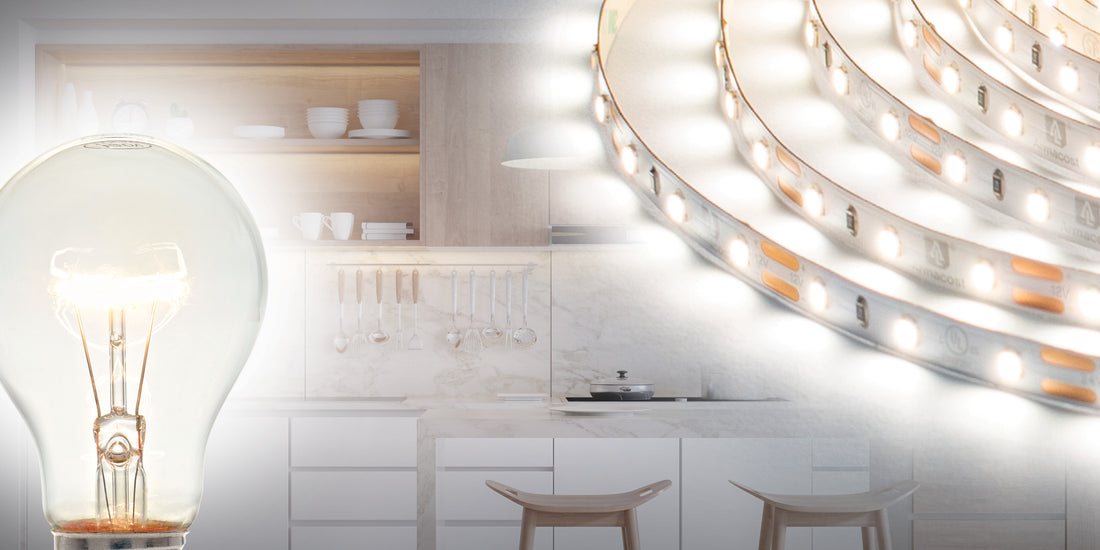Replacing Outdated Lighting Fixtures with LED Lights
If you are still using incandescent or halogen light bulbs in your home, switching to energy-efficient LED lighting is a quick way to save money on your energy bills. Making the switch from traditional light bulbs to LED lighting is easy. We’ll help answer the most common questions associated with understanding the difference between LED color temperature, wattage conversions, and brightness (lumens) equivalents.
What does energy-efficient mean? Energy efficiency is the use of less energy to produce the same result. LED (light emitting diode) lighting uses less energy than conventional forms of light. Armacost Lighting has a wide variety of LED lights for home and commercial applications, including LED light strips and LED puck lights for under cabinet LED lighting, LED tape light kits for easy DIY installations, and waterproof outdoor lighting for decks and landscaping.
Understanding LED Color Temperature and Lumen Output Options
When making the switch from traditional light bulbs to LED, the first difference in your shopping experience will likely be regarding LED color temperature and lumen output options. Here is a quick definition of both terms as it relates to finding the right LED lights for your needs:

Color Temperature
Measured in Kelvin (K), white LED color temperature is a number value that represents the “color”, or shade of white, the LED light emits. The higher the Kelvin temperature, the cooler and bluer the light becomes. The lower the Kelvin temperature, the warmer and more yellow the light becomes.

Lumens
In LED lighting, lumens (lm) is a measure of brightness. LED lights with a high lumen output will produce a bright light, perfect for task lighting. Lights with a lower lumen output will produce a more dim, low light, which is perfect for accent lighting.
Incandescent, Halogen & Fluorescent Light Bulb Conversion to LED Color Temperature
Incandescent lights traditionally have a low color temperature (between 2700K and 2800K). 2700K color temperature is the most common “warm” LED light used to replace incandescent bulbs.
Halogen light bulbs are typically a more neutral white. We suggest 3000K color temperature LED lighting options to replace traditional halogen bulbs.
Fluorescent lights, or daytime lighting, usually feature a high color temperature (between 4000K and 6000K). Choose between bright white (4000K), Daylight (5000K), or Cool White (6500K) LED light fixtures to replace fluorescent bulbs, depending on how cool, or blue, you want the light to be.

Incandescent, Halogen & Fluorescent Light Bulb Conversion to LED Lumen Output
What is the equivalent wattage for LED bulbs?
Wattage is a measure of energy used and lumens is a measure of brightness, so converting lumens to watts isn’t an exact science. However, brightness is correlated to wattage. For instance, to achieve similar light output to a 60W conventional bulb, you will need a LED light with around 800 lumens.
How do you convert lumens to watts?

Does color temperature affect wattage? For example, what is 3000K LED equivalent to in watts?
Remember, Kelvin is the measure of color temperature and has nothing to do with brightness. Lower color temperature light may appear to be dimmer (or less lumens), but there is no conversion chart between watts and color temperature.
Want to learn more about color temperature? Check out our White LEDs for Lighting Temperature Guide 2700K – 6500K blog post. Contact Armacost Lighting Customer Support if you need any assistance finding the right LED light options to fit your needs.





